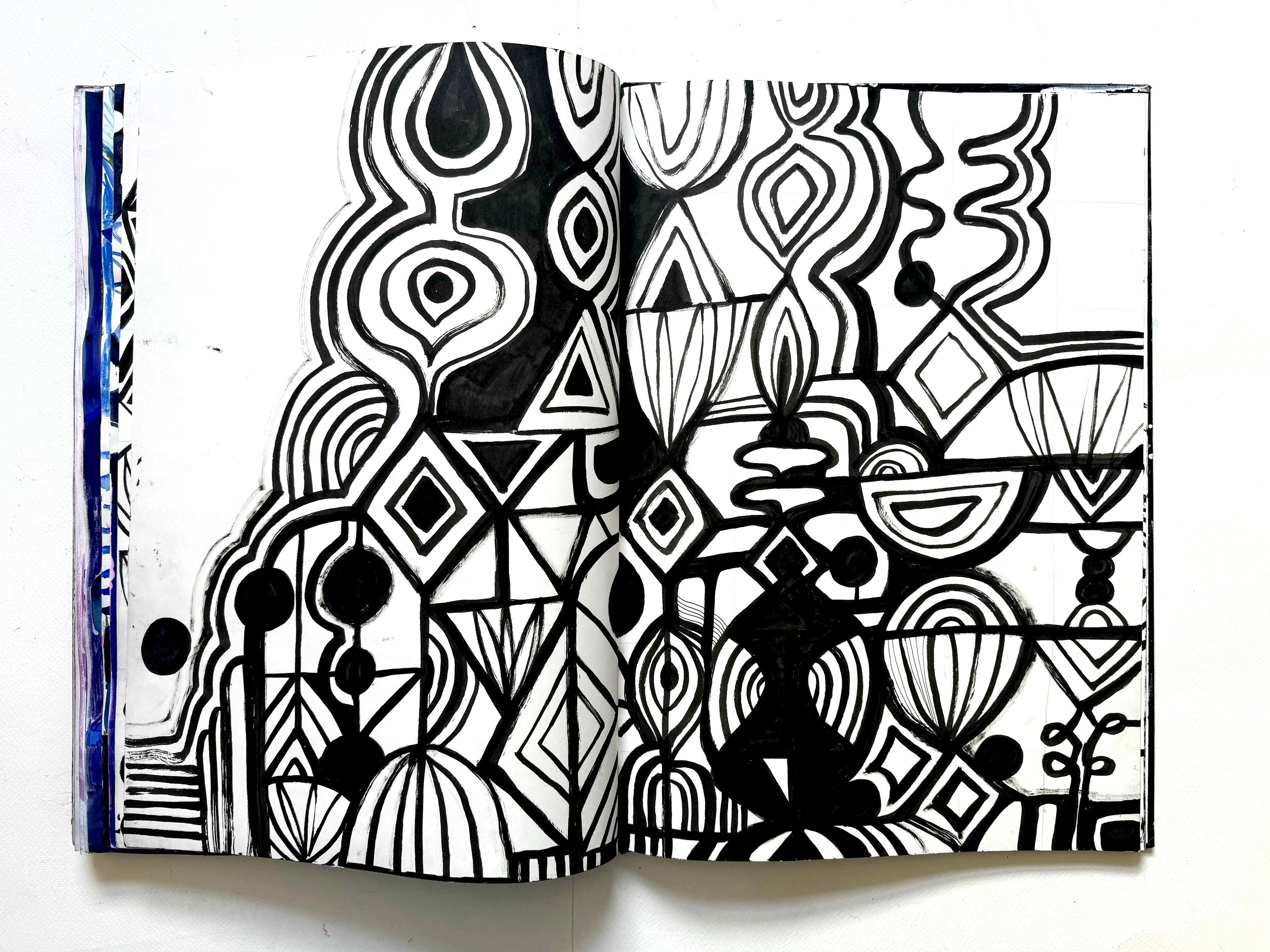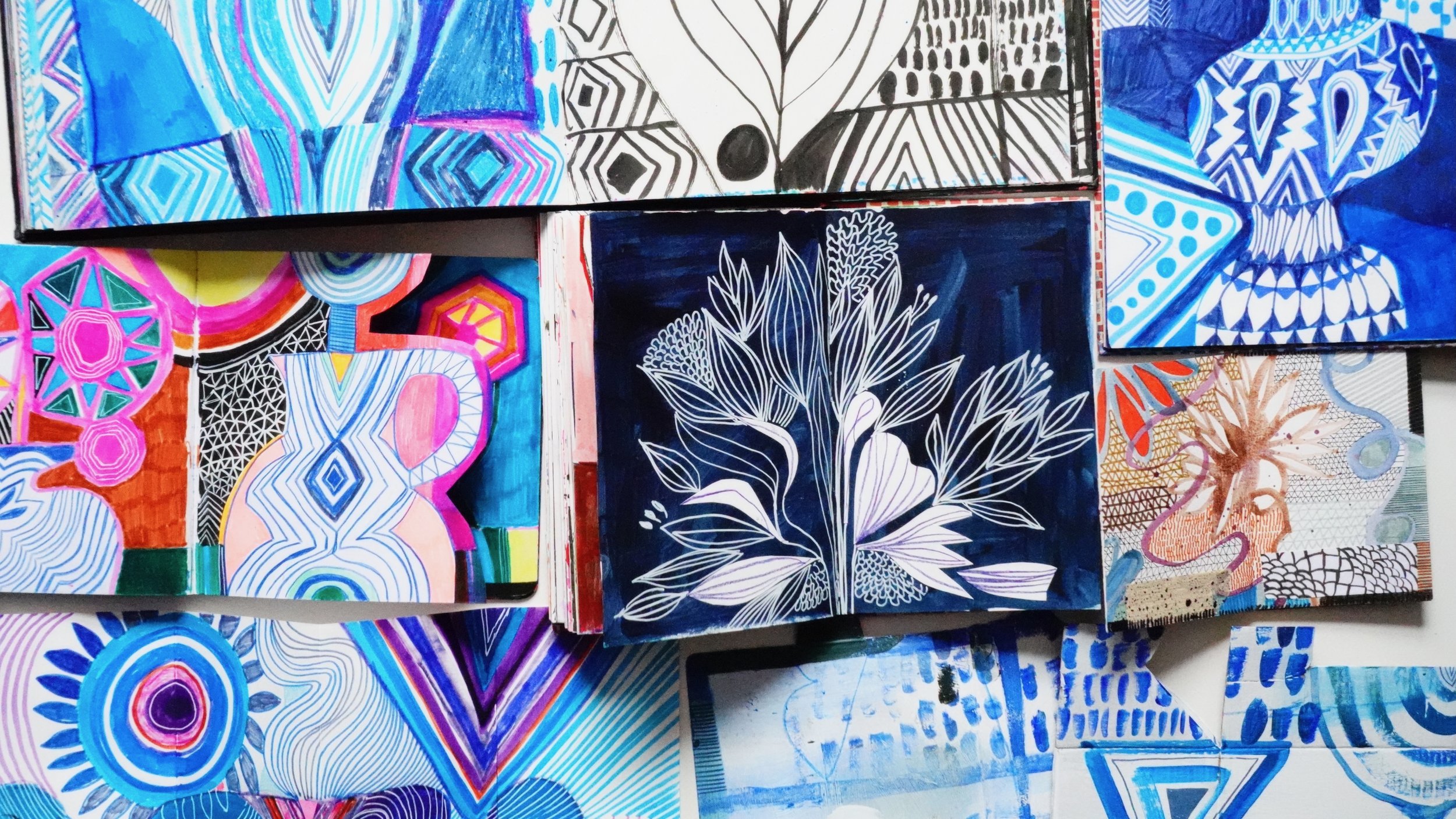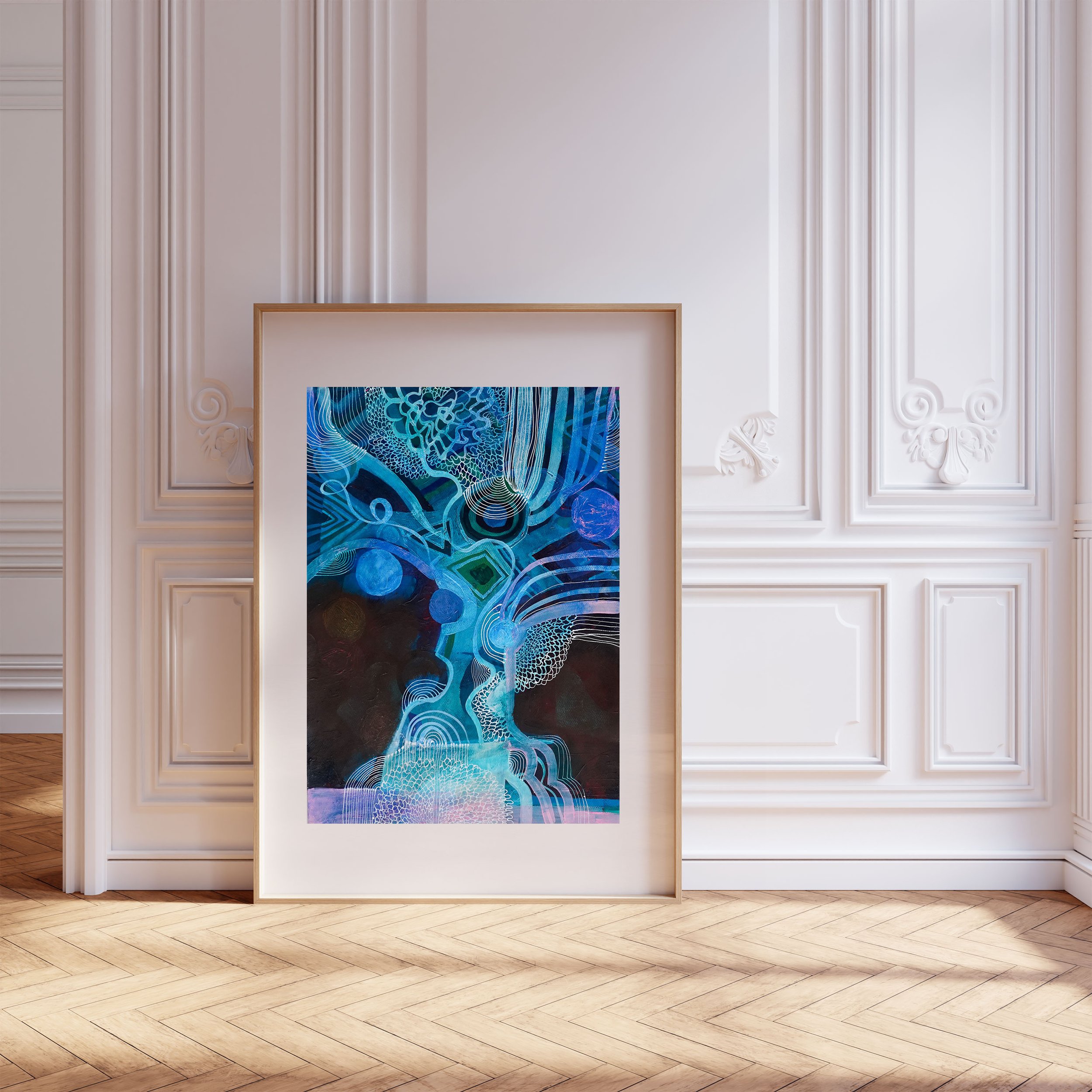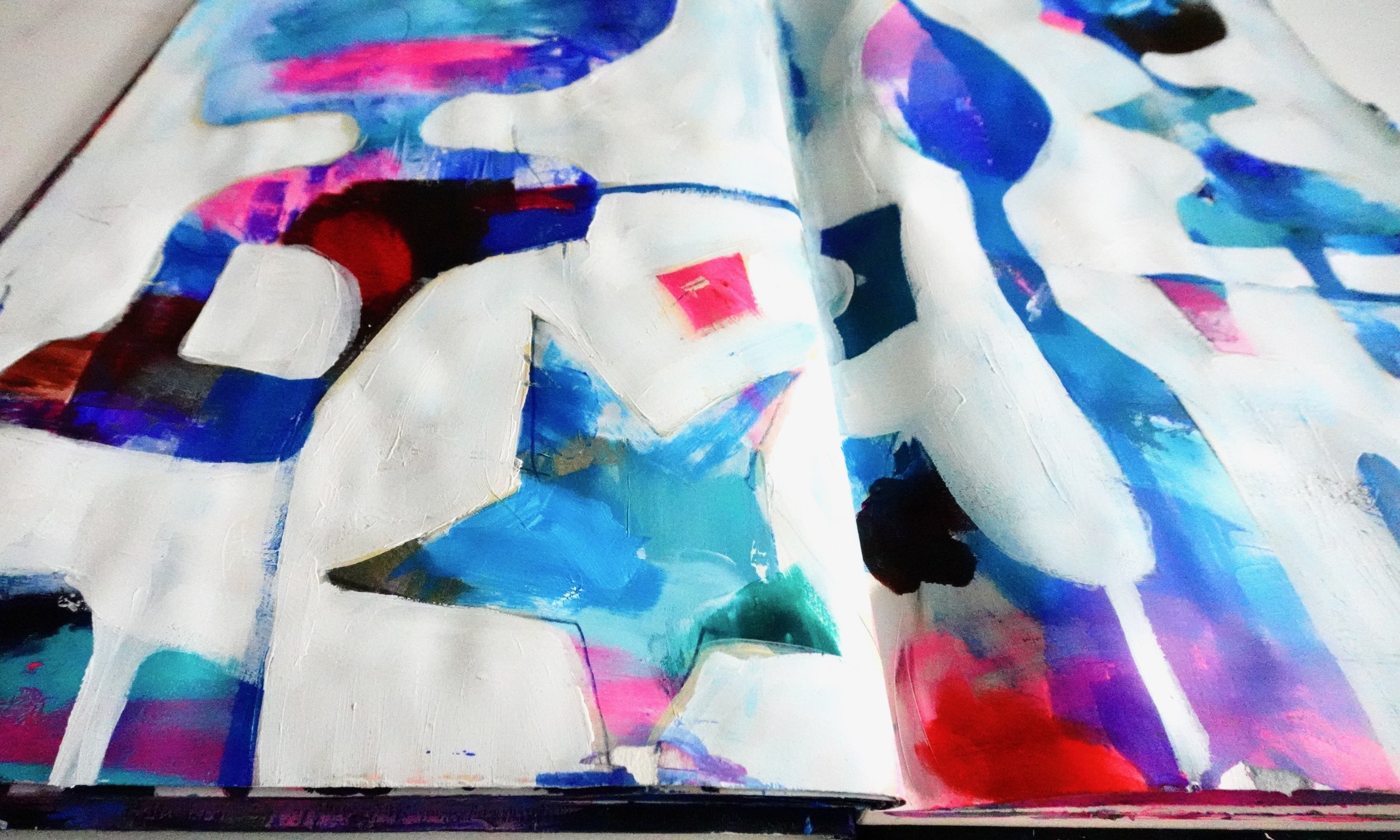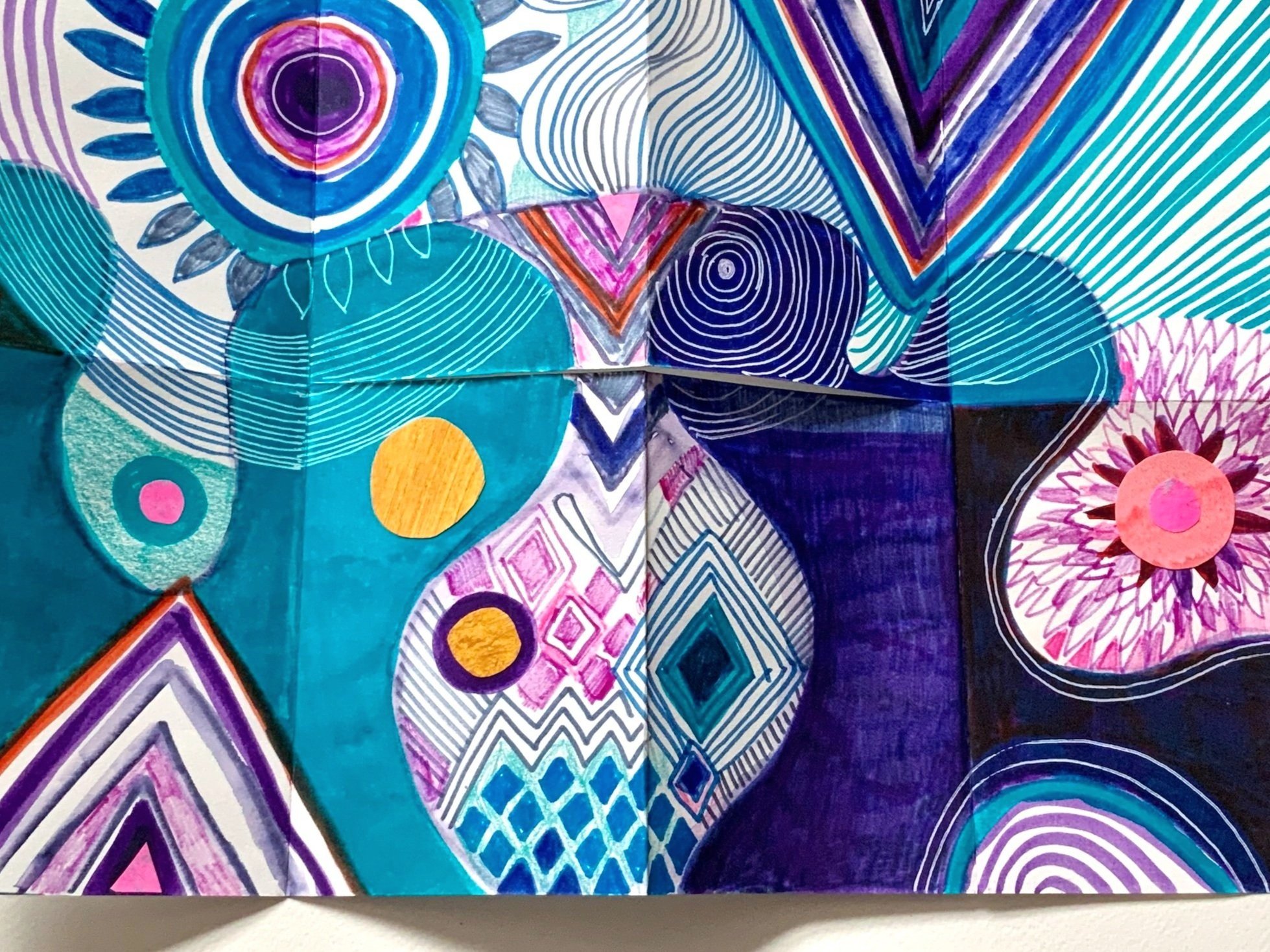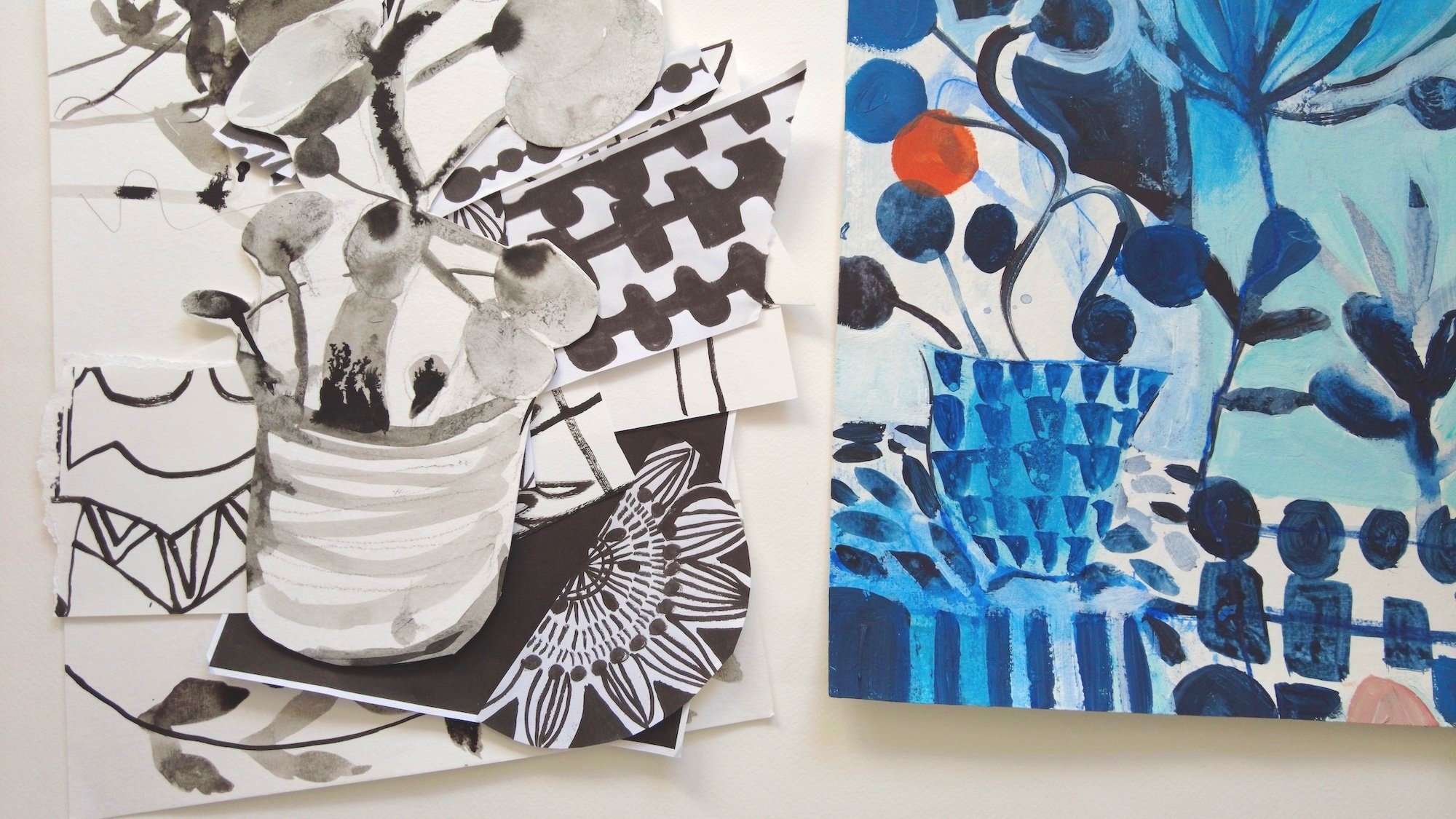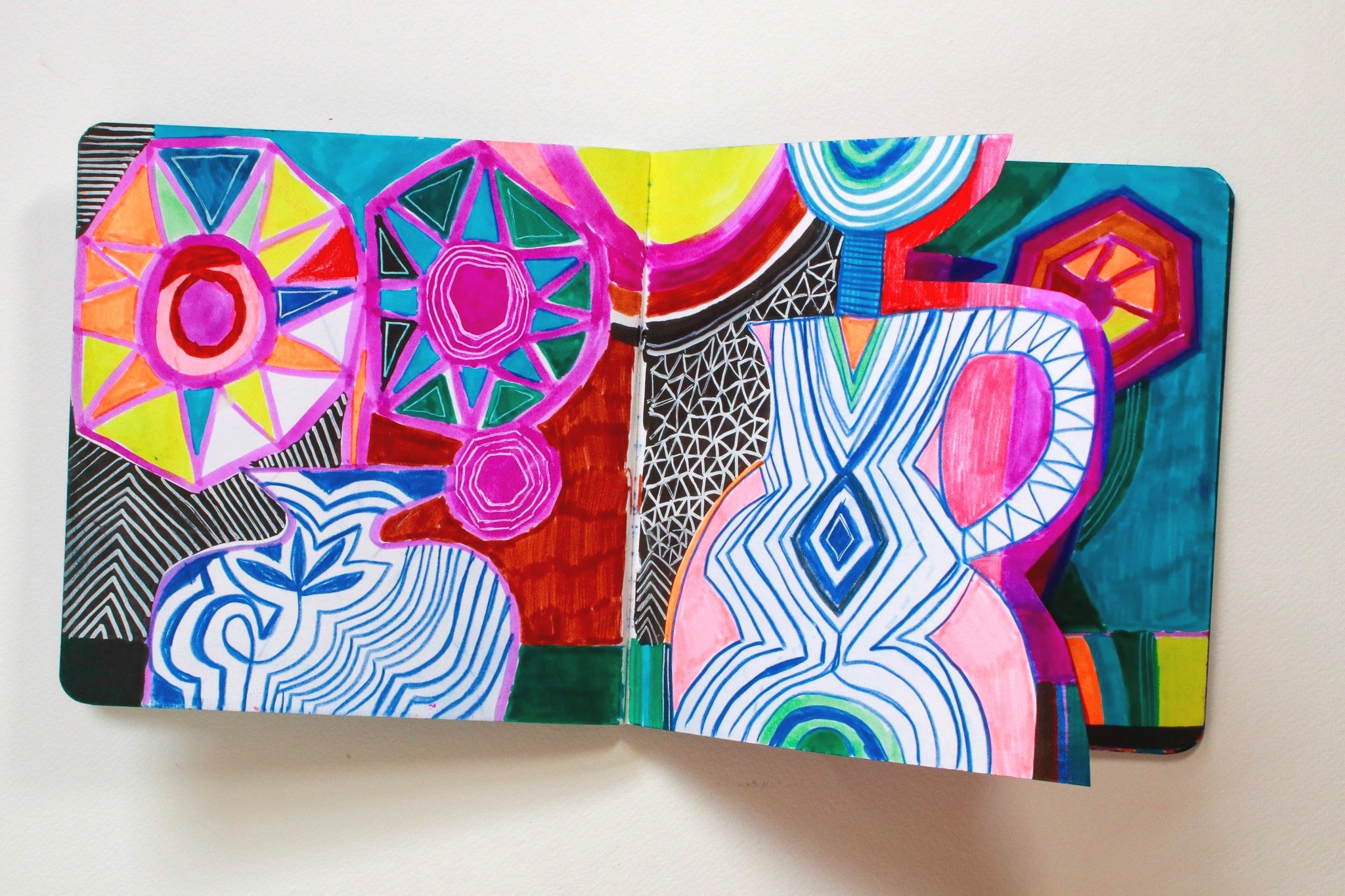
Art making ideasi
Ideas. Inspiration. A little creative mischief.
If you’re drawn to abstract and semi-abstract art, sketchbooks, colour and a little creative mischief, this is your corner of the internet.
Here you’ll find stories, videos, inspiration, art making advice and gentle nudges to help you create art that feels exciting to you.
Creative compost and joining the dots…
A few thoughts on what my sketchbooks are really for…
How to make a simple sketchbook
Learn how to make a simple concertina book which can be turned into a more regular sketchbook with a little glue…
Art and life: sketchbooks, paintings and art books
Tracing how my sketchbooks influence my paintings and sharing some favourite art books…
Art demo: abstract painting inspired by shapes
A practical tutorial about painting abstract pages inspired by shapes…
Painting: a process of discovery
Painting is often like setting off on an adventure with no idea of the destination
Abstract art: progression and process
The stages of an abstract painting and a few thoughts on process…
My favorite types of sketchbook
Some of my favorite types of sketchbook and thoughts on filling them up
Artist research: questions and answers
Artist Research Page. Some questions and answers about my process and inspirations




